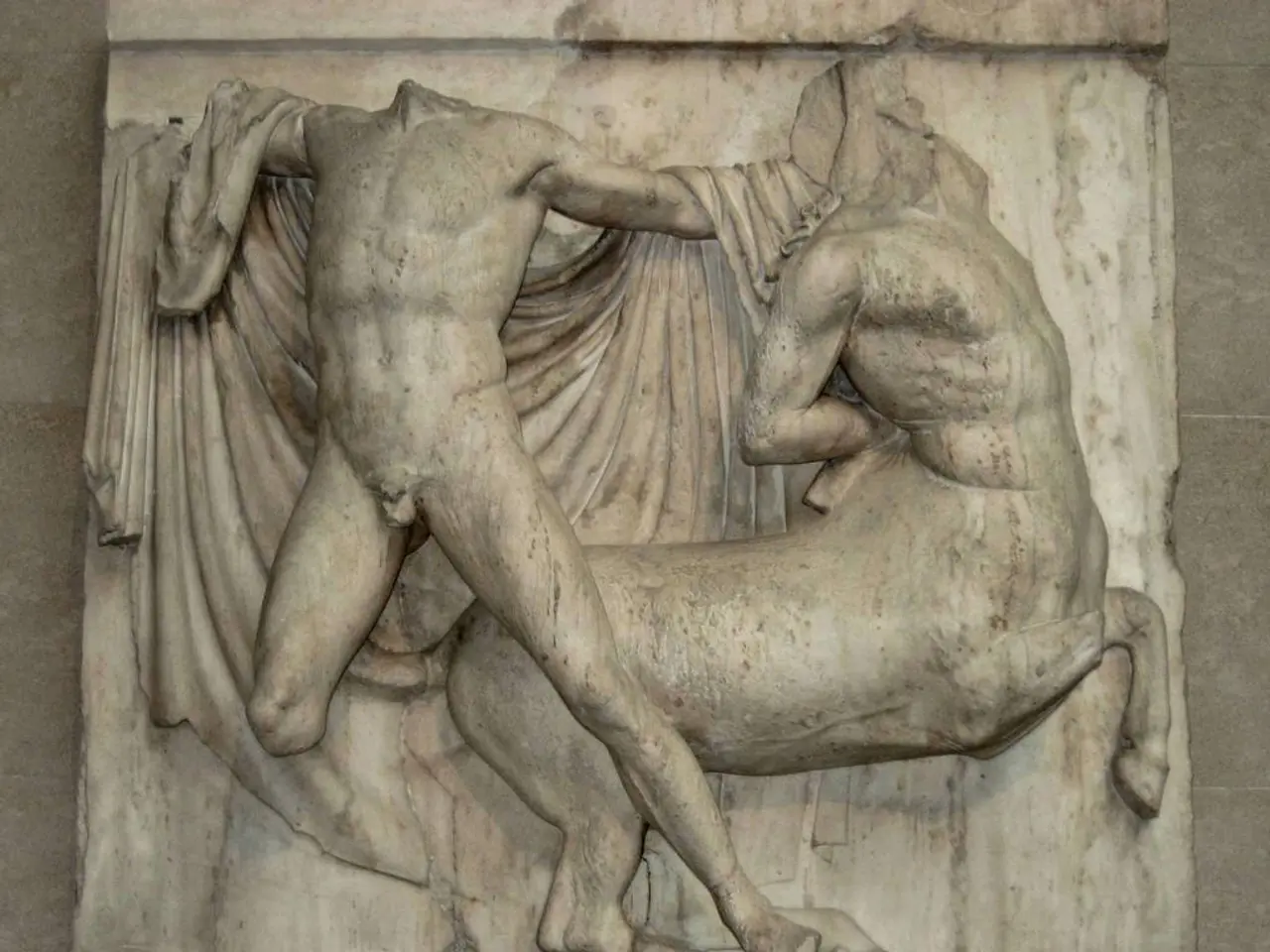Nine Prominent Art Creations by Ai Weiwei
=====================================================================
Ai Weiwei, a contemporary artist and activist, is known for his art that transcends borders and uses social media to amplify his influence. His work is significant in challenging political and cultural norms by directly addressing issues of human rights, freedom of expression, and the impacts of power on society.
Weiwei's art is deeply rooted in activism and uses powerful symbols and installations to expose government repression, censorship, and social injustices, particularly in the context of China and global political issues. One of his most iconic works, "Dropping a Han Dynasty Urn" (1995), challenges cultural norms and critiques China's disregard for its historical heritage.
His metaphors, like the sunflower seeds, critique the Communist Party’s control and the erasure of individual identity within the masses, symbolizing the relationship between authoritarian leadership and the people. "Sunflower Seeds" (2010) comprises millions of hand-painted porcelain sunflower seeds and explores themes of mass production, individuality, and collective experience.
Ai Weiwei's works often confront nationalism, exclusion, and state control, emphasizing the importance of autonomy, dissent, and human rights. For instance, his "Good Fences Make Good Neighbors" installation highlights issues related to immigration, borders, and political barriers, challenging restrictive political climates and advocating for openness and shared human responsibility.
Weiwei's personal experiences — including his arrest, surveillance, and travel ban by the Chinese government — underscore his role as a symbol of resistance against authoritarian suppression. His art serves as a platform for freedom of speech and democracy, making visible the struggles against oppression, while also critiquing global issues such as migration and displacement.
Notably, Ai Weiwei’s work often honours individuals who stand for free expression and justice, such as his “Trace” installation portraying activists and prisoners of conscience, further solidifying his commitment to human rights advocacy through art.
One of Weiwei's most poignant installations, "Remembering" (2009), is a memorial for the victims of the 2008 Sichuan earthquake. Another powerful piece, "Straight" (2008-2012), is a monumental installation featuring 150 tons of rebar recovered from collapsed schools in the earthquake, serving as a powerful memorial and critique of government negligence.
Weiwei's installations like "Colored Vases" (2006-2008) and "Template" (2007) serve as commentaries on cultural preservation and societal transformation, reflecting on China's rapid urbanization and the loss of traditional architecture. His "Blossom" (2015) both pays homage to traditional Chinese craftsmanship and critiques mass production, inviting contemplation on cultural heritage and the evolving landscape of contemporary China.
Ai Weiwei's work, "Law of the Journey" (2017), measures over 200 feet, challenging viewers to confront the global refugee crisis. This monumental refugee boat installation symbolizes the plight of displaced individuals and urging empathy, understanding, and action.
In summary, Ai Weiwei’s art is a profound political and cultural critique that leverages symbolism, personal experience, and large-scale public works to confront and challenge authoritarian power, censorship, and social exclusion, while promoting universal values of human rights and freedom of expression.
Social-media platforms often provide a means for Ai Weiwei to share his art and ideas, amplifying his influences and engaging a global audience.
Entertainment platforms, such as streaming services, have featured documentaries and films about Ai Weiwei, showcasing his life as an artist, activist, and his bold works that seek to prompt social change.







